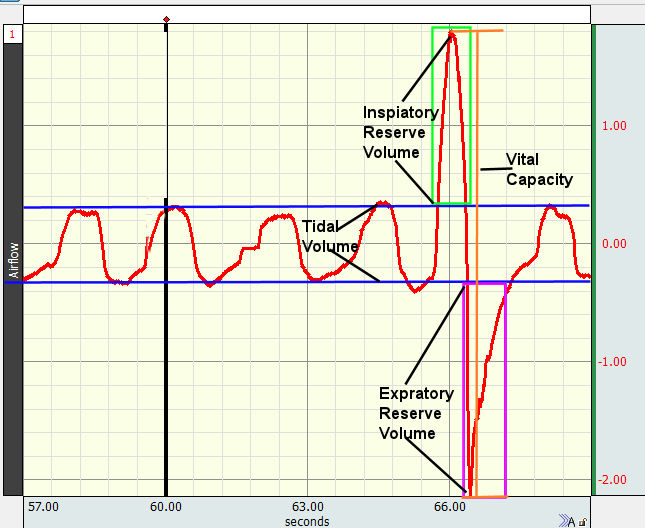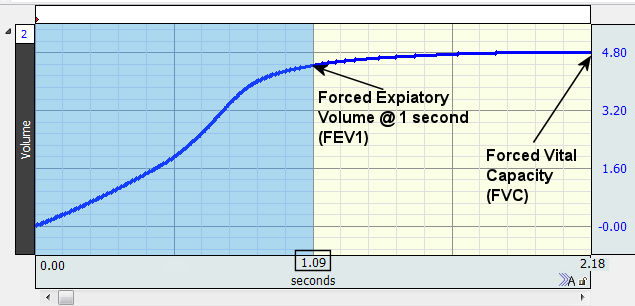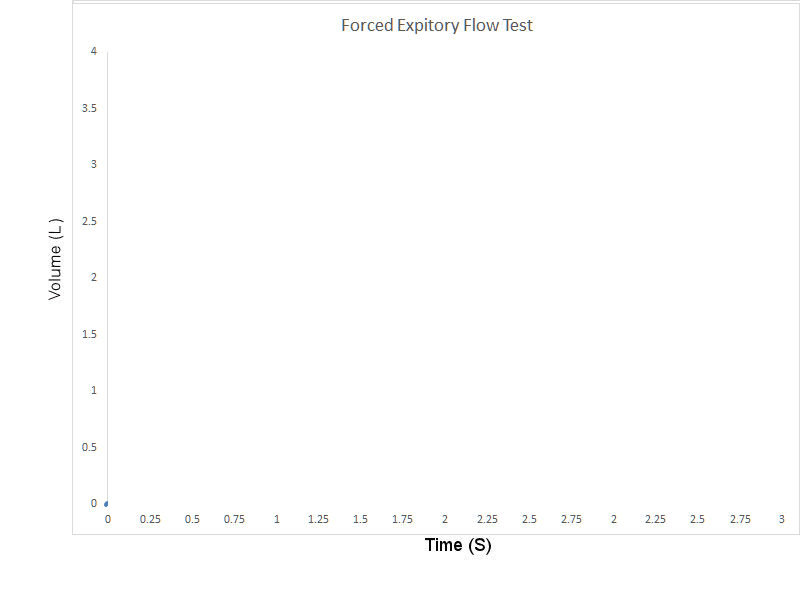Introduction
 Normally in Human Physiology, students measure their own respiratory capacities and their own forced expiratory volume through a pneumotach. Students breathe through the pneumotach and the computer measures the flow and displays everything neatly on the screen. We then simulate bronchitis by breathing through a straw and emphysema by attaching a belt around the ribs. However, it does not seem prudent to do this lab amidst a respiratory virus pandemic.
Normally in Human Physiology, students measure their own respiratory capacities and their own forced expiratory volume through a pneumotach. Students breathe through the pneumotach and the computer measures the flow and displays everything neatly on the screen. We then simulate bronchitis by breathing through a straw and emphysema by attaching a belt around the ribs. However, it does not seem prudent to do this lab amidst a respiratory virus pandemic.
Part 1
In part 1 you have 4 patients. We have our healthy or normal individual. This person should have typical values. Then we have an obstructive disorder (bronchitis). We will see what that does to the values. We will then have a restrictive disorder (emphysema) . Pay close attention to see if the values drop or not. Lastly, we have someone exercising. Click on each of the tabs and you will see a readout from the previous year. Find the tidal volume, expiratory reserve volume, inspiratory reserve volume and tidal capacities. See the chart to the right if you are confused what those are. Also find the minute volume (tidal volume x breaths per minute).
Part 2
In part 2 we have the forced expiratory volume at 1 second. FEV1/FVC%. We again have a normal individual, someone with an obstructive disorder (bronchitis), and someone with a restrictive disorder(emphysema). Again, click on the tabs and watch the read out. (These are computer generated, can you tell). For all 3 patients, find the Forced Expiratory Volume at 1 second and the Forced Vital Capacity. Then calculate the FEV1/FVC%. See the chart below to see where to find the values. The lab book wants you to calculate at 2 and 3 seconds too. That may be hard to read.







